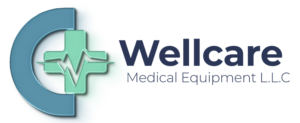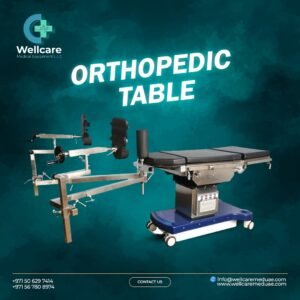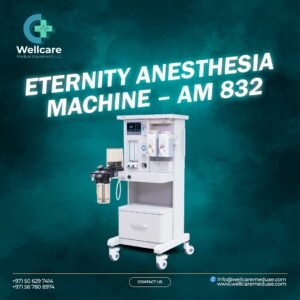Wellcare Medical Equipment LLC offers a comprehensive range of ENT (Ear, Nose, and Throat) products, designed to meet the diverse needs of healthcare professionals in diagnosing, treating, and managing ENT-related conditions. key types of ENT products provided by Wellcare Medical Equipment LLC:
Diagnostic Tools:
- Otoscope: Wellcare provides high-quality otoscopes for detailed examination of the ear canal and eardrum, essential for diagnosing infections, blockages, and other ear conditions.
- Audiometer: The company offers advanced audiometers to assess hearing acuity, critical for identifying and managing hearing loss.
- Tympanometer: Wellcare supplies tympanometers that evaluate middle ear function, helping diagnose conditions like fluid build-up or eardrum perforations.
- Nasal Endoscopes: Wellcare provides both rigid and flexible endoscopes for visualizing the nasal passages and sinuses, aiding in the diagnosis of sinusitis, polyps, and other nasal conditions.
Surgical Instruments:
- Sinus Surgery Instruments: Wellcare offers a range of specialized tools for sinus surgeries, including forceps, curettes, and suction devices, designed for precision and ease of use.
- Tonsillectomy Instruments: The company supplies complete sets of instruments for tonsillectomy procedures, including tonsil snares, dissectors, and retractors.
- Microsurgical Instruments: Wellcare provides delicate microsurgical tools used in ear surgeries, such as those required for tympanoplasty or ossiculoplasty procedures.
Therapeutic Devices:
- Hearing Aids: Wellcare supplies a variety of hearing aids, including behind-the-ear (BTE) and in-the-ear (ITE) models, tailored to suit different levels of hearing impairment.
- CPAP Machines: For the treatment of sleep apnea, Wellcare offers CPAP machines that deliver continuous positive airway pressure, ensuring patients maintain open airways during sleep.
- Nebulizers: Wellcare provides nebulizers for administering medication directly to the lungs, commonly used for respiratory conditions associated with ENT issues.
Imaging and Visualization Systems:
- ENT Microscopes: Wellcare offers high-resolution microscopes specifically designed for ENT procedures, enabling precise visualization during surgeries or examinations.
- Portable Video Laryngoscopes: These devices provided by Wellcare are essential for airway management and intubation, offering clear visualization of the larynx.
Consumables and Disposables:
- Nasal Packing and Splints: Wellcare supplies nasal packing materials and splints used post-surgery to support healing and control bleeding.
- Ear Specula: Disposable ear specula for use with otoscopes are also provided by Wellcare, ensuring hygienic and safe examinations.
- Nasal Sprays and Drops: Wellcare offers a range of medicated sprays and drops used in treating nasal congestion, allergies, and infections.
Patient Monitoring and Rehabilitation Devices:
- Pulse Oximeters: Wellcare provides pulse oximeters for monitoring oxygen levels during ENT procedures, ensuring patient safety.
- Speech Therapy Tools: The company offers devices and software that assist in speech therapy, particularly for patients recovering from ENT surgeries.
Sterilization and Disinfection Equipment:
- Autoclaves: Wellcare supplies autoclaves for sterilizing ENT instruments, ensuring compliance with hygiene standards and patient safety.
- Ultrasonic Cleaners: These devices are provided by Wellcare for the thorough cleaning of delicate ENT instruments before sterilization.
Wellcare Medical Equipment LLC ensures that healthcare providers in Kenya have access to the latest and most effective ENT products, supporting high-quality patient care across various medical settings.




